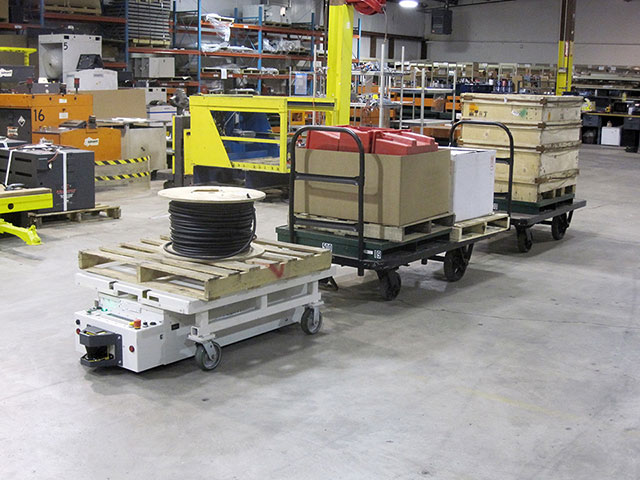In the process of automatic transportation, the AGV cart receives instructions from the base main control computer through the communication system and reports its own status, and the main control computer issues tasks to the AGV, and at the same time collects the information sent back by the AGV to monitor the working status of the AGV. The following monitoring can be completed through the on-board computer: manual control, safety device activation, battery status, steering limit, brake release, walking lights, drive and steering motor control, and charging contactor, etc.

The on-board computer equipped with the AGV is generally implemented by a PLC controller or a single-chip computer in hardware. It is the direct control center for the AGV robot to drive and perform operations. The main functions are: accept the commands and tasks issued by the main control computer to the main control The computer reports the AGV's own status, such as the AGV's position, running speed, direction, fault status, etc.; according to the accepted task and running route, it automatically runs to the destination loading and unloading station, and automatically completes the selection of the running route and the running speed in the process Selection, automatic unloading of goods, avoidance of trolleys in the direction of travel, safety alarms, etc.
The intelligent AGV trolley has the ability to program, and can complete tasks according to free or fixed paths. When the AGV needs to interface with other devices in the system, it also needs to be equipped with an automatic material loading and unloading and positioning mechanism, and its positioning accuracy is controlled by the main control computer.
Generally, the AGV trolley communicates with the main control computer of the base through radio communication, or through the wires buried in the line for inductive communication, or through infrared lasers, so as to achieve collision avoidance scheduling, working status detection, and task scheduling between AGV robots. Fixed-path AGVs mostly use communication cables buried in the ground trough or fixed-position infrared devices for communication, and free-path AGVs mostly use radio communication.
 中文
中文 English
English
